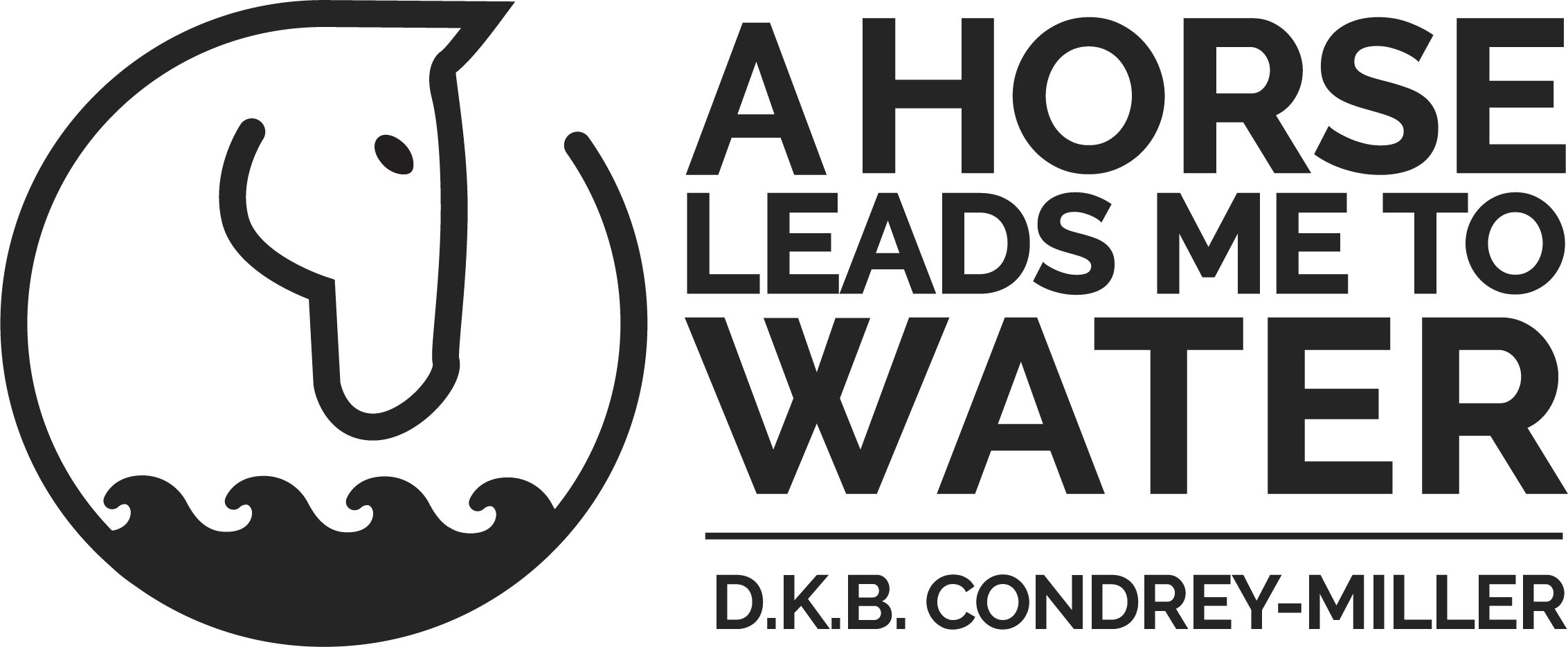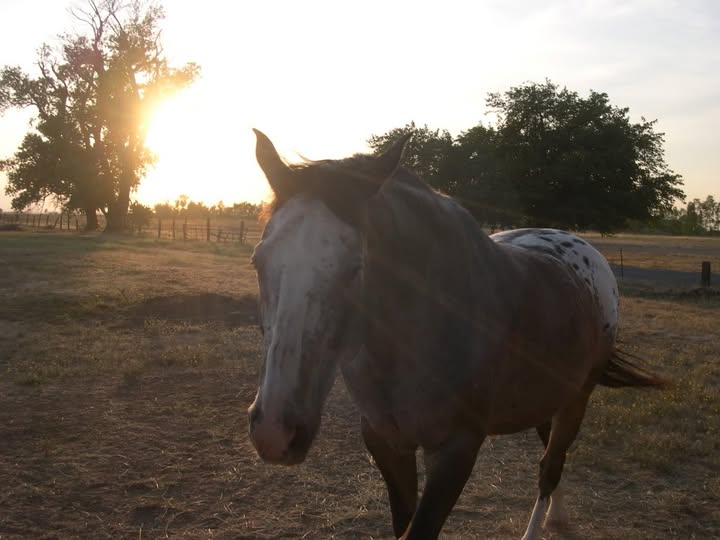
Even though we had brought him home from the trainer, the plan to sell Robert stood. In my short career with horses I had only bought them. I didn’t have a clue about selling them. It might seem that one merely does the transaction in reverse, butI couldn’t see it that simply.
While we were figuring out how we would promote and execute a sale, I was going to do my best to keep Robert’s recent training up (just the riding, not the jumping). Kitt had retreated emotionally from the horse when he decided to sell him as it was the only way he could go through with it. Even now he couldn’t bring himself to be closely involved with the horse. This left me largely on my own.
Though I had taken care of Robert by feeding and hoof trimming, and certainly saw our herd as one, he had always been my husband’s horse. My relationship with him was superficial. Getting on his back and riding him as an exercise in training without a real connection, felt odd.
You might ask if this detachment wasn’t the same as when I had ridden my trainer’s horses for my lessons, but somehow this was different. I lived with Robert, I knew him as a part of our home. With a sale of him in mind, the objectification rose to another level – was it disgust? Imposter syndrome flooded my self-talk as I donned the costume of the equestrian examples that had been set for me.
The day for our first riding session couldn’t be put off. I forged ahead with what I had hoped was composure and confidence. I saddled him, took him to our round pen, mounted and walked him around. Next we moved into a trot. Finally I asked for the canter. He moved right into it and for a moment success was achieved until almost immediately his gait turned choppy and unbalanced. I ended up on the ground, a bit shocked by the impact on my hip dnd gravel in my boots. Looking up, I saw him frozen and bug eyed with the saddle slid off to one side.
His rounded Polish Arabian conformation along with low withers made saddle security a challenge. That the saddle might slip this way without a tight enough girth wasn’t unbelievable. My mistake. I’d try again. Before I got up my mind flashed a thought that Robert was saying in a horrified whisper, “Something. is. on. me.” , as if he were wrapped by a horse consuming beast.
Certainly I was putting words to his expression, to which I assigned humor in an attempt to keep light hearted about the mishap, but I couldn’t deny the genuine frightened energy he projected. Following the famous so-called rule of getting right back on the horse – and not letting the session end on a “bad” note, especially as insecurity on my part – I reset the saddle and tightened it.
Again we went around at the walk, around at the trot. The canter came again too, but also the choppy unbalanced gait and the thud of my hip contacting the ground. The saddle sat again off to one side of the horse. I couldn’t believe it!
This time my eyes met Robert’s frightened and pleading gaze. I could find no humor in what I felt him say. “I don’t understand anything we do.” These solemn words changed me in a way for which I was not prepared, filling me with doubt about everything I was doing with horses. Though it was more about doubting my abilities than whether I should be doing it, per se.
Pondering the other times I had “heard” the horses speak, which offered a range of messages, I was hearing a depth of the horses far beyond the utility of their bodies. Of course, horsemen and women speak for horses all the time, interpreting their astounding assemblage of subtle and gross body language along with some vocalizing.
From nuanced facial expressions, head and neck movements, ear positions, body orientation, kicking, stomping, striking, pawing, biting, touching, lip, tongue and jaw movements and more the horse makes known his feelings and desires. From playful and friendly curiosity to invitations for engagement to signals of displeasure and acts of self-preservation, the horse has a rich vocabulary.
Humans working with horses, I noticed, tended to dumb the body language down and twist the meanings into anthropomorphic emotions, which were meant to be overcome in the horse, so that how he felt didn’t interfere with the human agenda. I was a student of this teaching lineage too, but the illogic of it, when I noticed it, plumped my doubting thoughts.
Once I asked Starfire to trot around the pen which she did half-heartedly until I added emphasis to the extrinsic motivation by raising the voice of my expectation and snapping the long lunge whip behind her. However, she did not offer the livelier trot I wanted. Instead she reared up with a squeal followed by her charging past me, heels kicking up, just missing my head.
By resisting my demand, she was telling me something. Was my request unreasonable? Was I not asking correctly? Was she a “bad” horse? Why did this generally very friendly mare become dangerous when the training techniques and abnormal expectations were presented? Why did the drills for obedient performance incense her, even though such results brought high praise from me?
Often wondering how she ended up at the rescue ranch I thought that perhaps someone had been injured by one of her outbursts of resistance. I’ll never know.
During the period that I was routinely taking Valentino away in the trailer only to return a couple hours later, Vegas approached the gate one day and very clearly I heard him say that he “wanted to see where we go.” Amused, I told him that the next time I would take him along.
On the day I expected him to balk at the invitation to fulfill his desire, since he didn’t readily load into the trailer as a rule. But that time he walked right in after Valentino. I drove to the arena a couple of miles down the road. Vegas got out and looked around as one who takes in a broad vista of a scenic location, shifting one’s gaze in a panoramic sweep, pausing on the details. Apparently satisfied he then stood quietly tied to the trailer while I practiced riding on Valentino in the arena. He loaded into the trailer easily again for the ride home. He seemed to have accomplished his goal. He never asked to join us again.
The messages I received from the horses were a combination of seeing the body language and feeling the energy in which they were expressed, along with intuition, an openness to interpret their signs for what they meant for them.
There is the field of telepathic or remote communication with animals and I am not claiming that ability, in this case. Back when I was working on getting more information about Vegas’ history I did engage such a communicator. We spoke on the phone. Whether I shared anything about him with her beforehand escapes me, and I have only a vague memory of what she said he said, which was along the lines that he had been a blue ribbon jumper who liked to run. There were other parts of his communication which regretfully I can’t recount. I do remember crying for the sense of loss that the horse was said to feel.
Could the feelings or communications I was directly experiencing with Vegas, Starfire, and Robert simply be my projections? Maybe they were. But why would I project them not wanting to do as I desired? Perhaps my clairvoyance – my clear seeing – was just that, seeing without obstructing with my own biases? Was I capable of that?
Navajo Valentino aka Jim, spoke to me too. He probably told me the most because I expected the most from him compared to the other horses. And because I expected him to , I also avoided, sometimes, hearing what he was really saying to me. Some of those experiences will be described later, but now I can tell you about the first time I really heard him. I’m not sure that ‘hearing’ him is even the right way to describe the experience, as it was more like a transference of perspective, a refraction that showed an entirely different picture than the one I took for granted.
Jim was 16 years old when he was sold to me by someone who had bred him and had him his whole life. Save a short stint trial as a race horse which went nowhere (yes, many other breeds besides Thoroughbreds serve insatiable audiences for wagering and sensational spectacle around a track.) The owner’s work was about to take her on an open-ended years-long traveling program. Her strategy was to find him a new home while his fitness, potential and appeal were still high. She was torn by the need to meet the calling of a vocation shared with her husband and the love of this horse. Since I had a goal and a trainer, and was relatively local, she felt comfortable choosing me to take him.
At the veterinary inspection – customary for such a transaction – she tearfully asked me to promise that I would never sell him. I assured her that he had a home for life with me.
The vet gave the horse high marks for conformation and general good health and that was that. We signed the bill of sale. Jim now belonged to me.
On the day that my trainer and I went to look at the horse, we learned his registered name, Navajo Valentino, and that he had always been called Jim. Driving home after the meeting we discussed that he seemed like a good choice for me for what I wanted to do. But I didn’t want to call him Jim. Valentino! That was a name fitting of the image to which I aspired and that’s how I called him.
Horses are bought and sold at the whim, commercial or needful circumstances of their owners, but they do not think of themselves as owned. Whether these transactions bring a horse into better conditions from which they came or into worse situations, they have no choice. No matter the cause or effect they get plucked from homes that included their group of human and non-human friends or family – in which they may be comfortable – without ever understanding why they were moved to a place of strangers.
Jim withstood a difficult integration into our original group of three (a story unto itself), and my demanding lesson schedule with him that hardly waited for him to get his bearings must have felt abrupt, like a sort of kidnapping. Was he hoping he would be going home every time I loaded him onto the trailer?
One day our eyes met as I cavalierly addressed him as Valentino as I had been doing for months and in his gaze I saw heartbreak and deep wondering of my mistake. He was Jim. “Who was Valentino?”
Like all the messages I had heard and felt from the horses speaking Jim revealed to me that day and in subsequent interactions that there was much, much more to him and the others than met the worldly equestrian eye.

